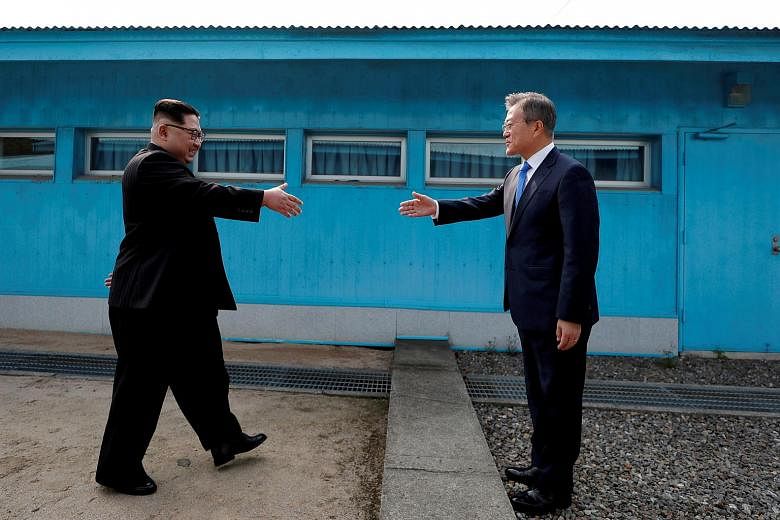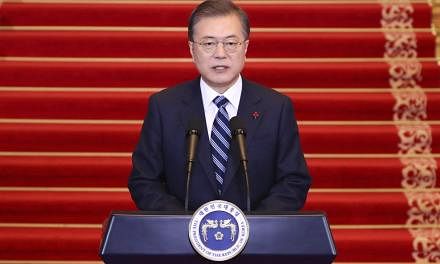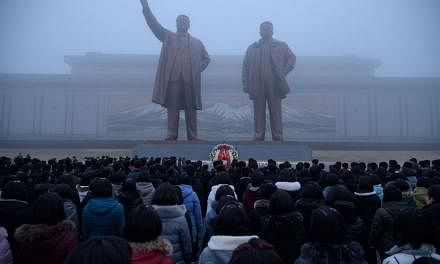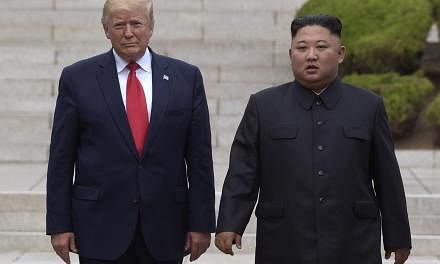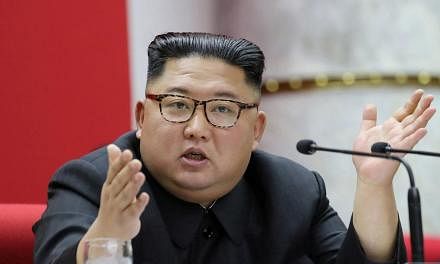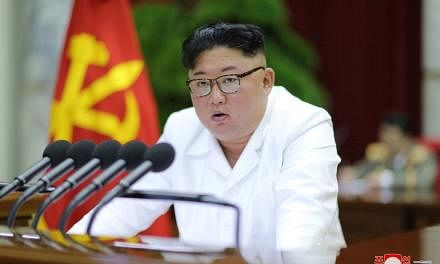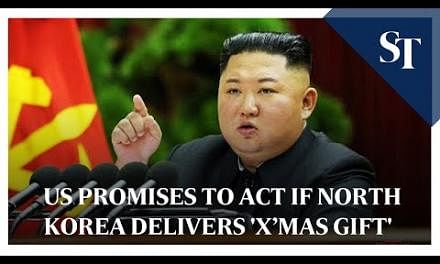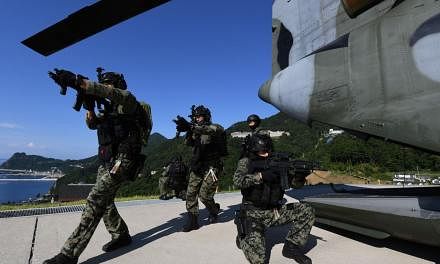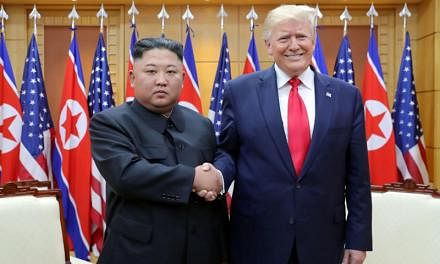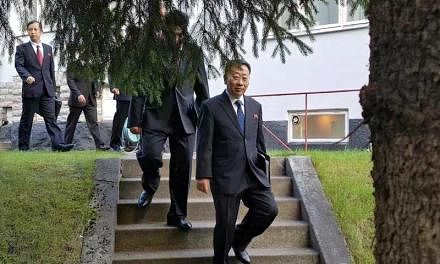HONG KONG (NYTIMES) - It might fall short of a peace treaty, but after seven decades of truce on the Korean Peninsula, the "peace declaration" that President Donald Trump and President Kim Jong Un are expected to announce when they meet in Vietnam this week would be no small thing.
How can warring nations embroiled in a conflict that left millions dead agree to end the fighting - but not manage to ever sign a formal peace treaty for 70 years?
It's complicated.
The first thing to know about the Korean War, which ran from 1950 to 1953, is that it was halted by an armistice, or truce, rather than a negotiated peace treaty. Strictly speaking, that means the fighting might have ended, but the war did not.
While the outlines of a peace accord have been considered for decades, things picked up steam last year when Mr Trump and Mr Kim agreed to the first-ever direct meeting between leaders of the two countries.
That decision came amid a thaw between South Korea and North Korea, and it renewed talks by their officials to formally end the war.
Now, with Mr Trump and Mr Kim about to meet for a second time, there are expectations that the moment might be right for a breakthrough.
A PERMANENT PAUSE IN A BITTER WAR
A peace deal would replace the armistice that ended combat, if not the outbreak of small-scale hostilities on the Korean Peninsula, but did not resolve the conflict between the two Koreas.
The armistice was a military document, setting forth the terms for a ceasefire. A peace agreement would have been a more complicated political settlement.
After the end of World War II in 1945, Korea, which had been a Japanese colony, was divided into two zones. The Soviets occupied the north, while the Americans occupied the south.
In 1948, each side formed its own government - and then in 1950, the North invaded the South.
Other countries were soon drawn in. The United States led a United Nations force in alliance with the South, while China aided the North.
The 1953 armistice was signed at Panmunjom, a village in what became the Demilitarised Zone, by Lt Gen William K. Harrison, an American and representative of the UN forces, and General Nam Il, who represented North Korea and the Chinese forces.
It was signed later by the North Korean leader, Kim Il Sung; General Mark W. Clark, an American who led UN troops; and Peng Dehuai, commander of the Chinese forces, who called themselves "volunteers".
The South promised to observe the ceasefire, but it did not sign because it held out hopes of unifying the Korean Peninsula.
The armistice set out terms for prisoner exchanges and created the specifics of the DMZ, the 4km wide buffer dividing North and South.
WHAT WOULD REPLACE THE ARMISTICE?
While discussions of a peace deal have often referred to a "treaty", a formal treaty would face significant obstacles.
The North and South each claim to be the rightful government of the entire Korean Peninsula and representative of people on both sides. So such an agreement might be met with significant questions of sovereignty.
And for the United States to sign, Congress would need to approve the deal, another wrinkle.
Instead, South Korea has hedged its descriptions, referring to the "establishment of permanent peace on the Korean Peninsula" as a goal.
That still allows plenty of room for a statement of peace. But it would be a start, not an end.
"Whatever they call it - a peace declaration, a peace accord, even a peace treaty - it doesn't mean we will all wake up and Korea is at peace," Dr John Delury, an associate professor of Chinese studies at Yonsei University in Seoul, said last April as the two Koreas were weighing a deal.
"It's significant, but it's embedded in a process," he added. "I would imagine the two Koreas can do something on their own to declare their own commitment to peace."
WHAT WOULD A PEACE PROCESS LOOK LIKE?
A declaration could begin a peace process that would go beyond questions of the North's nuclear and missile programmes. North and South Korea could agree to pull back their forces from the border and create some sort of system for inspections of each side to verify compliance.
Other ideas that have been suggested in past years include setting up joint teams to remove some of the hundreds of thousands of land mines in the DMZ. And the zone itself, which is rich in wildlife thanks to its oddly protected status, could become a park and tourist destination for visitors from both sides.
The sea border to the west of the Korean Peninsula could also be the focus of peace talks. It is the site of the bloodiest recent conflicts, including the killing of two South Korean marines and two construction workers when North Korea shelled a South Korean island in 2010, and the deaths of 46 sailors when a South Korean navy corvette was sunk earlier that year, for which it blamed the North.
"There's room for creative approaches to how you would turn this from a situation that's very hostile, where people do not trust each other, where their guns and missiles and nukes are aimed at each other, and turn that into a real absence of conflict, where parties are not worried about the other's hostile intentions," Dr Delury said.
PRECEDENTS TO BUILD ON
There has, of course, been talk of a formal peace deal before, so there are reasons to keep expectations in check.
But those earlier discussions also offer grounds for hope. They mean that there are precedents to build on, including a "peace declaration" made at a 2000 summit meeting between Mr Kim Jong Il, then leader of North Korea, and Mr Kim Dae-jung, then president of the South.
A 2007 meeting between Mr Kim Jong Il and Mr Roh Moo-hyun, then president of South Korea, concluded with a series of economic agreements and proposals for easing tensions along the western maritime border.
There are more recent signs that the peninsula may be ready for peace.
Last February, almost 70 years after its forces invaded the South, the North was again marching on the other side of the DMZ. But this time, it was athletes, not soldiers. And North and South were marching together.
They were at the Olympics.
